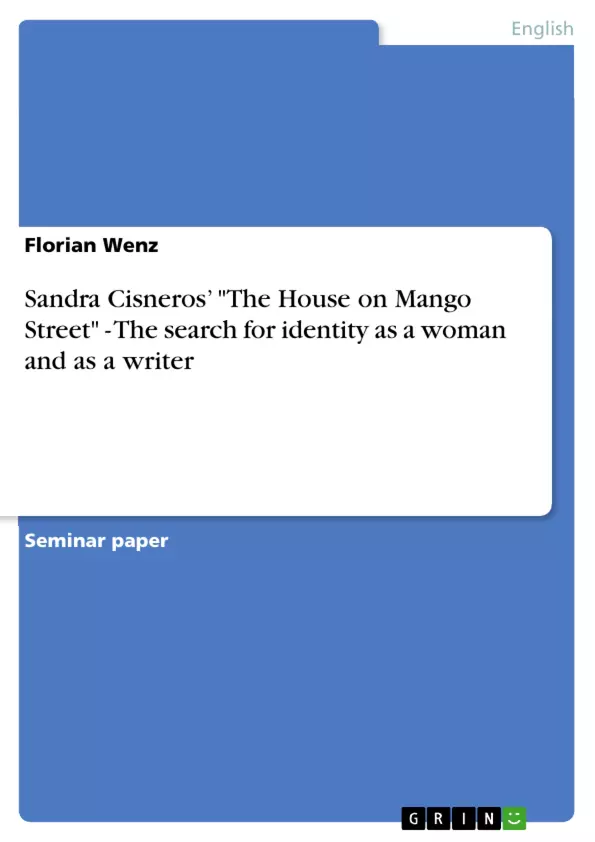In the following text I would like to give an approach to the identity of the protagonist Esperanza Cordero in the novel “The House on Mango Street”. I will start with a short summary of the book. In part 3 I will take a closer look on the characters in her environment that coined her most during the stay on Mango Street. Part 4 finally will occupy with Esperanza’s identity, on the one hand as awoman and on the other hand as a writer. In part 5 I will sum up my results and draw a conclusion.
Table of Contents
- Introduction
- Short summary
- The major characters of the story
- Nenny
- Sally
- Alicia
- The search for identity
- As a woman
- As a writer
Objectives and Key Themes
This text aims to explore the development of the protagonist Esperanza Cordero's identity in Sandra Cisneros' novel “The House on Mango Street”. It analyzes the impact of her environment on her self-perception, particularly as a woman and a writer. The text examines the challenges Esperanza faces as a young Chicano woman living in poverty and explores how she seeks to overcome these obstacles.
- The impact of environment on identity formation
- The struggles of young Chicano women in poverty
- The search for self-discovery and agency
- The role of writing in achieving self-expression and escape
- The complexities of female sexuality and relationships
Chapter Summaries
The introduction provides an overview of the text's objectives and structure. The chapter “Short summary” introduces the novel and its main themes, highlighting Esperanza's coming-of-age journey and her desire to overcome limitations imposed by her circumstances. The chapter “The major characters of the story” delves into the lives of key characters, including Esperanza's sister Nenny, her friend Sally, and her mentor Alicia. Each character plays a significant role in shaping Esperanza's understanding of the world and her own place within it. These chapters offer a glimpse into the challenges Esperanza faces as she navigates her youth, relationships, and aspirations for a better future.
Keywords
The primary themes and concepts explored in this text include identity formation, coming-of-age, Chicano culture, poverty, gender roles, female sexuality, the power of writing, and the search for self-discovery and agency. The analysis focuses on the experiences of a young Chicano woman navigating the complexities of life in a marginalized community.
- Quote paper
- Dipl. Germ. Florian Wenz (Author), 2006, Sandra Cisneros’ "The House on Mango Street" - The search for identity as a woman and as a writer, Munich, GRIN Verlag, https://www.grin.com/document/192731



